
MINISTRY OF EDUCATION VIETNAM ACADEMY
AND TRAINING OF SCIENCE AND TECHNOLOGY
GRADUATE UNIVERSITY OF SCIENCE AND TECHNOLOGY
............***............
NGUYEN DUONG NGUYEN
NEWTON-KANTOROVICH ITERATIVE
REGULARIZATION AND THE PROXIMAL
POINT METHODS FOR NONLINEAR
ILL-POSED EQUATIONS INVOLVING
MONOTONE OPERATORS
Major: Applied Mathematics
Code: 9 46 01 12
SUMMARY OF MATHEMATICS DOCTORAL THESIS
Hanoi - 2018

This thesis is completed at: Graduate University of Science and
Technology - Vietnam Academy of Science and Technology
Supervisor 1: Prof. Dr. Nguyen Buong
Supervisor 2: Assoc. Prof. Dr. Do Van Luu
First referee 1: ......
Second referee 2: ......
Third referee 3: ......
The thesis is to be presented to the Defense Committee of the Gradu-
ate University of Science and Technology - Vietnam Academy of Science
and Technology on . . . . . . . . . . . . 2018, at . . . . . . . . . . . . o’clock . . . . . . . . . . . .
The thesis can be found at:
- Library of Graduate University of Science and Technology
- Vietnam National Library

Introduction
Many issues in science, technology, economics and ecology such as image
processing, computerized tomography, seismic tomography in engineering
geophysics, acoustic sounding in wave approximation, problems of linear
programming lead to solve problems having the following operator equation
type (A. Bakushinsky and A. Goncharsky, 1994; F. Natterer, 2001; F.
Natterer and F. W¨ubbeling, 2001):
A(x) = f, (0.1)
where Ais an operator (mapping) from metric space Einto metric space e
E
and f∈e
E. However, there exists a class of problems among these problems
that their solutions are unstable according to the initial data, i.e., a small
change in the data can lead to a very large difference of the solution. It is
said that these problems are ill-posed. Therefore, the requirement is that
there must be methods to solve ill-posed problems such that the smaller
the error of the data is, the closer the approximate solution is to the correct
solution of the derived problem. If e
Eis Banach space with the norm k.k
then in some cases of the mapping A, the problem (0.1) can be regularized
by minimizing Tikhonov’s functional:
Fδ
α(x) = kA(x)−fδk2+αkx−x+k2,(0.2)
with selection suitable regularization parameter α=α(δ)>0, where fδis
the approximation of fsatisfying kfδ−fk ≤ δց0and x+is the element
selected in Eto help us find a solution of (0.1) at will. If Ais a nonlinear
mapping then the functional Fδ
α(x)is generally not convex. Therefore, it is
impossible to apply results obtained in minimizing a convex functional to
find the minimum component of Fδ
α(x). Thus, to solve the problem (0.1)
with Ais a monotone nonlinear mapping, a new type of Tikhonov regular-
ization method was proposed, called the Browder-Tikhonov regularization

2
method. In 1975, Ya.I. Alber constructed Browder-Tikhonov regulariza-
tion method to solve the problem (0.1) when Ais a monotone nonlinear
mapping as follows:
A(x) + αJs(x−x+) = fδ.(0.3)
We see that, in the case Eis not Hilbert space, Jsis the nonlinear map-
ping, and therefore, (0.3) is the nonlinear problem, even if Ais the linear
mapping. This is a difficult problem class to solve in practice. In addition,
some information of the exact solution, such as smoothness, may not be
retained in the regularized solution because the domain of the mapping Js
is the whole space, so we can’t know the regularized solution exists where
in E. Thus, in 1991, Ng. Buong replaced the mapping Jsby a linear and
strongly monotone mapping Bto give the following method:
A(x) + αB(x−x+) = fδ.(0.4)
The case E≡His Hilbert space, the method (0.3) has the simplest
form with s= 2. Then, the method (0.3) becomes:
A(x) + α(x−x+) = fδ.(0.5)
In 2006, Ya.I. Alber and I.P. Ryazantseva proposed the convergence of
the method (0.5) in the case Ais an accretive mapping in Banach space E
under the condition that the normalized duality mapping Jof Eis sequen-
tially weakly continuous. Unfortunately, the class of infinite-dimensional
Banach space has the normalized duality mapping that satisfies sequen-
tially weakly continuous is too small (only the space lp). In 2013, Ng.
Buong and Ng.T.H. Phuong proved the convergence of the method (0.5)
without requiring the sequentially weakly continuity of the normalized du-
ality mapping J. However, we see that if Ais a nonlinear mapping then
(0.3), (0.4) and (0.5) are nonlinear problems. For that reason, another sta-
ble method to solve the problem (0.1), called the Newton-Kantorovich it-
erative regularization method, has been studied. This method is proposed
by A.B. Bakushinskii in 1976 to solve the variational inequality problem
involving monotone nonlinear mappings. This is the regularization method
built on the well-known method of numerical analysis which is the Newton-
Kantorovich method. In 1987, based on A.B. Bakushinskii’s the method,

3
to find the solution of the problem (0.1) in the case Ais a monotone
mapping from Banach space Einto the dual space E∗, I.P. Ryazantseva
proposed Newton-Kantorovich iterative regularization method:
A(zn) + A′(zn)(zn+1 −zn) + αnJs(zn+1) = fδn.(0.6)
However, since the method (0.6) uses the duality mapping Jsas a regular-
ization component, it has the same limitations as the Browder-Tikhonov
regularization method (0.3). The case Ais an accretive mapping on Ba-
nach space E, to find the solution of the problem (0.1), also based on A.B.
Bakushinskii’s the method, in 2005, Ng. Buong and V.Q. Hung studied the
convergence of the Newton-Kantorovich iterative regularization method:
A(zn) + A′(zn)(zn+1 −zn) + αn(zn+1 −x+) = fδ,(0.7)
under conditions
kA(x)−A(x∗)−J∗A′(x∗)∗J(x−x∗)k ≤ τkA(x)−A(x∗)k,∀x∈E
(0.8)
and
A′(x∗)v=x+−x∗,(0.9)
where τ > 0,x∗is a solution of the problem (0.1), A′(x∗)is the Fréchet
derivative of the mapping Aat x∗,J∗is the normalized duality mapping of
E∗and vis some element of E. We see that conditions (0.8) and (0.9) use
the Fréchet derivative of the mapping Aat the unknown solution x∗, so
they are very strict. In 2007, A.B. Bakushinskii and A. Smirnova proved
the convergence of the method (0.7) to the solution of the problem (0.1)
when Ais a monotone mapping from Hilbert space Hinto H(in Hilbert
space, the accretive concept coincides with the monotone concept) under
the condition
kA′(x)k ≤ 1,kA′(x)−A′(y)k ≤ Lkx−yk,∀x, y ∈H, L > 0.(0.10)
The first content of this thesis presents new results of the Newton-
Kantorovich iterative regularization method for nonlinear equations in-
volving monotone type operators (the monotone operator and the accretive
operator) in Banach spaces that we achieve, which has overcome limita-
tions of results as are mentioned above.






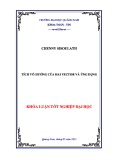


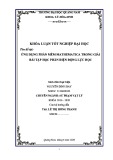

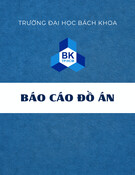
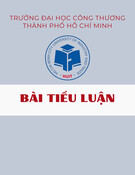
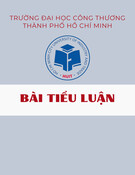
![Ô nhiễm môi trường không khí: Bài tiểu luận [Nổi bật/Chi tiết/Phân tích]](https://cdn.tailieu.vn/images/document/thumbnail/2025/20251011/kimphuong1001/135x160/76241760173495.jpg)







![Ứng dụng kỹ thuật trao đổi ion trong điện phân: Bài tiểu luận [chuẩn nhất]](https://cdn.tailieu.vn/images/document/thumbnail/2025/20250829/sonphamxuan1808/135x160/97341756442892.jpg)



